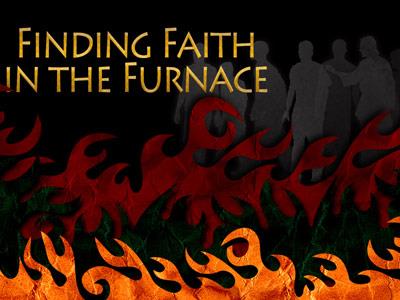-
Daniel Chapter 4c Series
Contributed by Darren Rogers on Nov 28, 2017 (message contributor)
Summary: Do we think more of ourselves than we do of God?
Daniel – Chapter 4c
A. Chapter 4 Outline
I. The Dream (4:1-18)
a. The King’s Introduction (4:1-5)
b. The Councillors Ignorance (4:6-7)
c. The Prophet’s Insight (4:8-9)
d. The Dream Illustrated (4:10-18)
II. The Interpretation (4:19-27)
a. Daniel’s Thoughts (4:19)
b. Nebuchadnezzar’s Tree (4:20-26)
c. Possible Tranquillity (4:27)
III. The Fulfilment (4:28-36)
a. The Pride (4:28-30)
b. The Proclamation (4:31-32)
c. The Punishment (4:33)
d. The Praise (4:34-37)
Message
III. The Fulfilment (4:28-36)
a. The Pride (4:28-30)
The king didn’t fly off the handle or go into some mega rage like he did before. Was this a simple resignation to the will of God? Was it just a simple willingness to wait and see if this interpretation was true?
Verse 28
What God had promised, He is able also to perform, whether it be a promise of blessing or one of judgement. Romans 4:21 And being fully persuaded that, what he had promised, he was able also to perform.
We are about to see that not only does God keep His Word but He is willing to give people chance after chance. He still gave Nebuchadnezzar time to repent and turn to the Most High.
Verse 29
God graciously gave Nebuchadnezzar a year to repent of his sins, but the king refused to heed God’s warning, pride had gripped his heart so much that he would not submit to the Most High God.
God gave the wicked world of Noah’s day 120 years to turn from their evil ways and acknowledge God, but they refused to turn from their sins 1 Peter 3:20 Which sometime were disobedient, when once the longsuffering of God waited in the days of Noah, while the ark was a preparing, wherein few, that is, eight souls were saved by water.
He gave the city of Jerusalem almost 40 years of grace after the religious leaders had crucified their Messiah, and then the Romans came and destroyed the city and the temple. Just think ho longsuffering He has been with this present world 2 Peter 3:9 The Lord is not slack concerning his promise, as some men count slackness; but is longsuffering to us-ward, not willing that any should perish, but that all should come to repentance.
John Phillips says…
The city of Babylon was founded by Nimrod soon after the flood
Idolatry was born in this city. Babylon reached its peak and greatest splendour in the days of Nebuchadnezzar. The city was defended to the south by a huge area of marshland. Trade rout?
For centuries, Babylon was just an ordinary place, a city of the dominant Assyrian empire, but once the combined armies of the Babylonians and the Medes overthrew Nineveh (612BC) the future of Babylon was assured. The new kingdom extended rapidly to the east and south and west to Jerusalem and Egypt.
Nebuchadnezzar inherited the growing empire upon the death of his father Nabopolassar and set about strengthening and expanding Babylon. Most of what we know today about Babylon comes from the Greek Historian Herodotus who saw the city in all its splendour.
The city was built in the form of a square, about fifty six miles in circumference. The Euphrates, which flowed through the city, provided the city with more than an abundance of water. It was spanned by a spectacular bridge.
On the one side of the bridge stood an enormous temple dedicated to Belus and it was filled with a numerous golden idols, and on the other side of the bridge stood Nebuchadnezzar’s grand palace.
The perimeter walls of the city were 335 feet high and about 87 feet thick. Chariots could race side by side on these massive walls. The walls had a hundred gates of solid brass, 25 on each side of the city. A straight road ran from each gate dividing the city into a grid of 676 squares. In the centre of the city there were 150 pillars 88 feet high supporting the chapel of Baal and inside was a colossal golden image of this false god.
The one thing that Babylon is known for having one of the seven wonders of the ancient world – the Hanging Gardens of Babylon. The gardens were built to cheer up Nebuchadnezzar’s homesick wife, Amyitis. Amyitis, daughter of the king of the Medes, was married to Nebuchadnezzar to create an alliance between the nations. The land she came from, though, was green, rugged and mountainous, and she found the flat, sun-baked terrain of Mesopotamia depressing.
Successive terraces rose one above another until they reached as high as the walls. They were filled with soil and planted with every kind of tree and flower. The king had recreated his wife’s homeland by building an artificial mountain with rooftop gardens.
The Ishtar Gate was built and dedicated to the goddess Ishtar. It was awesome in appearance and one of the most impressive monuments of the ancient Near East. It was decorated with glazed brick reliefs, in tiers, of dragons, lions and young bulls. The gate was a double gate, and it was the starting point for the half mile Processional Way to the Temple of Marduk.

 Sermon Central
Sermon Central



